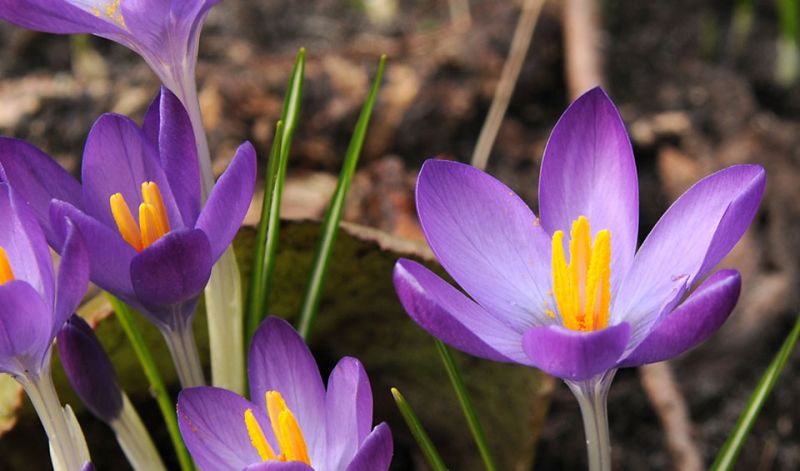Crocus tommasinianus
("Botanical crocus / Snow crocus / Lilac Tommy")

Profusely flowering and spontaneously self-propagating, these are a very good choice for naturalizing.
What You Need To Know Before You Plant:
When Will This Flower Bloom?
Very early Spring
When Should I Buy and Plant These Bulbs?
Fall
What Kind of Light Does This Bulb Prefer?
Full sun to partial shade
What Color Will the Flower Be?
Bluish-purple
How Far Apart Should I Plant These Bulbs?
2 in / 5 cm
How Deep Should I Dig?
3 in / 8 cm
How Tall Will It Grow?
3-4 in / 8-10 cm
Recommended Number of Bulbs Per Square Foot?
20
Is It Deer/Critter Resistant?
With a bit of luck, yes.
How Can I Best Use It in My Landscaping?
In borders, rock gardens, lawns and under trees and shrubs.
What Should I Do After Flowering?
Allow the foliage to die back naturally and they will grow back and bloom for many years to come. If you want them to naturalize successfully in your lawn you should not cut your lawn (or mow around them) for several weeks after flowering has finished.
Other Popular Varieties
(Besides the species itself); 'Albus' (white), 'Barr's Purple' (amethyst violet), 'Lilac Beauty' (violet), 'Ruby Giant' (velvety deep purple) and 'Whitewell Purple' (reddish hued lavender-purple).
About the Family
Crocus (Spring Flowering) Family
Cultivation and harvesting of crocuses was first documented on the island of Crete in the Mediterranean. Crocus are native to woodland, scrub and meadows from sea level, to alpine tundra in central and southern Europe, North Africa and the Middle East, on the islands of the Aegean, and across central Asia into western China. The first crocuses seen in the Netherlands, where they are not native, came from Constantinople in the 1560's. A few ended up with Carolus Clusius in the botanical gardens in Leiden. By 1620 some new varieties had been developed that are very similar to ones still being traded today.
Read More About the Family


